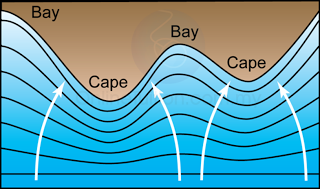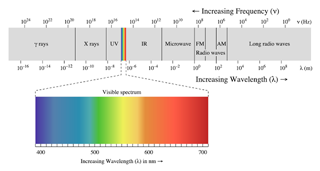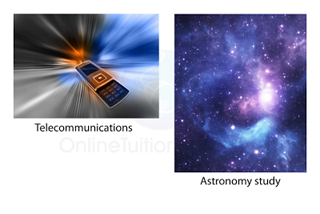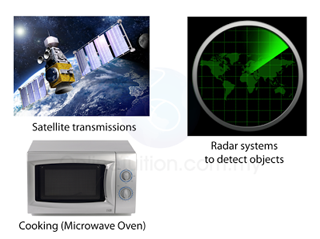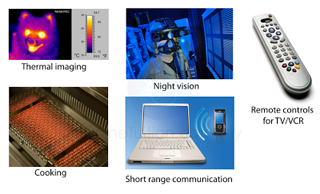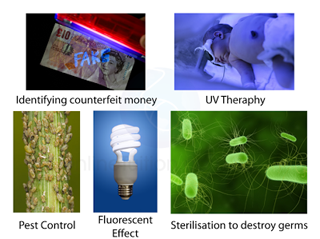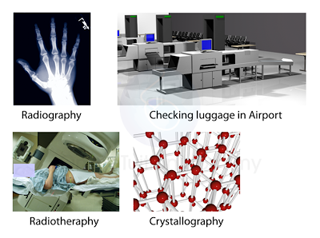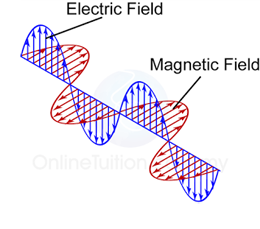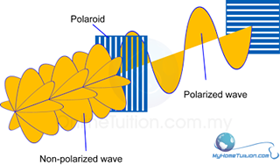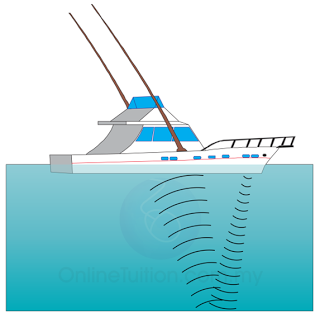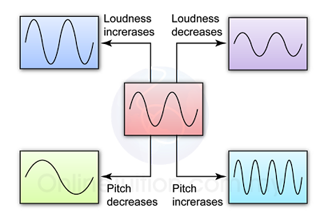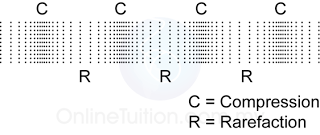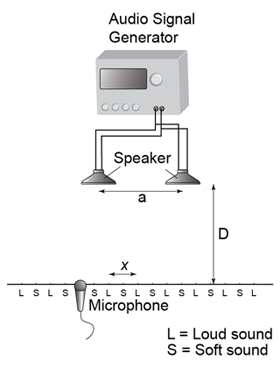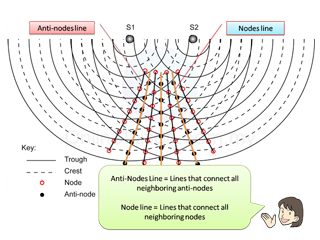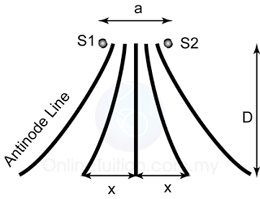Nodal Line and Anti-nodal Line
- An anti-node is a point of maximum amplitude where constructive interference occurs. Whereas a node is point of minimum amplitude where destructive interference occurs.
- The anti-nodal line joins all anti-node points. The nodal line joins all node points.
Formula for Interference
The distance between two antinode line, x, can be related to the wavelength, λ, by the follwing equation:

λ = Wavelength
a = Distance between the two wave sources
x = Distance between two successive anti-node lines or node lines
D = Distance from the wave sources to the plane where x is measured.
